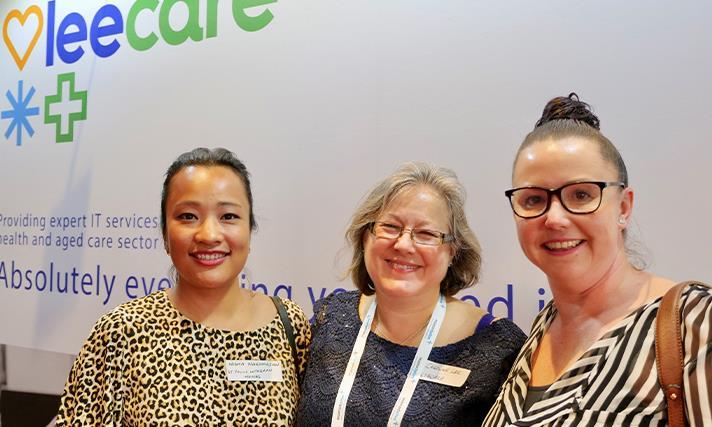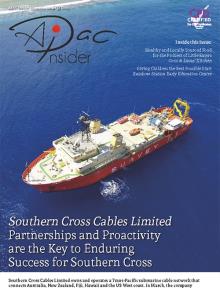
The Rise of Technology in Health, Aged, Social Services and Community Care
Words by Dr Caroline Lee, Chief Executive Officer of Leecare Solutions.
The new Australian Aged and Community Care Quality Standards highlight the need to engage and involve people in their care and life choices. The era of health professionals dictating all aspects of care and deciding on care goals is well and truly over. Technology can aid the instant reflection of changing needs and wants in a person’s care and support plan.
And what better way to engage and involve people in their healthcare than through Apps designed to gather preferences, choices and clinical information that interfaces dynamically with a full clinical and social software system. Apps installed on devices, tablets, wearable technology in health and social support care is now available by quality software providers.
Healthcare is ever changing through research findings but also through the maturation of individuals as they become more educated and expectant of engaging in their own health and social care support options and care goals (P5Mycareplan). Hence software systems have to be not just configurable, but editable (Platinum 5). Only then can they represent content that addresses Quality Standard changes and remain relevant.
Apps need to be dynamic, they are unsupportive if they are static. Clients need to be able to change any software with their changing systems and processes. Leecare’s 21-year experienced enterprise, web browser-based Platinum 5 suite not only links specifically designed Apps to their full system but enables those Apps to be auto-modified through the software so every organisation can become their own, at no extra cost, development company.
Why enable a client to modify their system easily and have those display in their ‘at point of care or choice’ Apps? Surely the edict of a software company is to optimise development opportunities and increase income?
A health and social services’ software company such as Leecare wants to remain viable however, also wants their client base to present to their own client base, a representative, supportive and responsive system. Representative of their client’s needs’, by using the forms/schema and reports’ builders to ensure assessment content reflects their requirements and can be changed when those change. Supportive of the care, nursing, social, allied health and medical teams’ need, through easy to use Apps that can be used at the point of care (P5Mobile and P5Notes), which auto-reflect the organisation led assessment content changes.
But some software needs to remain specialist in their design and content, whilst others that gather information from humans need to be modifiable to reflect a changing work and healthcare environment. Radiology software that enables cross-section analysis of organs and blood flow needs to be specifically designed for that purpose. But software that captures Pathology results needs to be dynamic to enable an organisation to update and include new results as research identifies additional parameters to assess and report.
And technology can engender a sense of community, for example Apps with streetscapes of favourite places that people watch as they exercise, with other people in their residential care or supportive service. These Apps work if persons can select what they wish to view. Technology that represents a person’s life timeline, through the display of images and information that traverses the person’s life, from the net or other specialist services, supports reminiscence and emotional calm. Again, these need to be Apps that can interrogate the net and locate resources a person can select from.
Beacon technology that pushes critical client or resident information to a device (P5Insight) as staff walk past a Beacon on a door or house, linked to a person’s profile, further supports staff ‘on the floor/ground /approaching the person’s home’. Technology that can alert health and care professionals re key information, that enables monitoring without action, can address one of the fundamental issues in healthcare and that is lack of time and money.
The rise of technology is only commensurate with affordable devices. Health, aged, social and community care services are understandably economically aware sectors with limited budgets. A software company’s responsibility in this sector is to provide affordable, device and platform independent choices so that any affordable device can be used. Time is precious hence software also needs to be intuitive, to save training time and costs, so that resources can be applied instead to change management processes to encourage technology use.
Apps linked to enterprise systems enable the merger of two other critical health and social care needs time saving data input, with extensive analysis, to determine quality service provision direction, that involves the resident, client or person. Affordable health and social care Apps P5Mobile, P5Insight, P5Notes and P5Mycareplan are all linked to the Platinum 5 enterprise system. They all ensure clinical, care, social, medication, operations, finance and medical information is congruent, relevant and engages the most important people involved in care staff and the persons they support.
Table 1 Australian Government AGED CARE QUALITY STANDARDS
Standard 1 Consumer dignity and choice
Standard 2 -Ongoing assessment and planning with consumers
Standard 3 -Personal care and clinical care
Standard 4 Services and supports for daily living
Standard 5 Organisation’s service environment
Standard 6 Feedback and Complaints
Standard 7 Education and Human Resources
Standard 8 – Organisational Governance
Company Details:
Company: Leecare Health Pte Ltd, Leecare Solutions Pty Ltd, Leecare Solutions UK Limited
Name: Dr Caroline Lee, Chief Executive Officer
Address: 1005A Mt Alexander Road, Essendon, Victoria, 3040, Australia
Website: www.leecare.com.au ; www.leecare.sg ; www.leecare.co.nz ; www.leecare.co.uk
Telephone: Head Office: 61 3 9339 6888





























